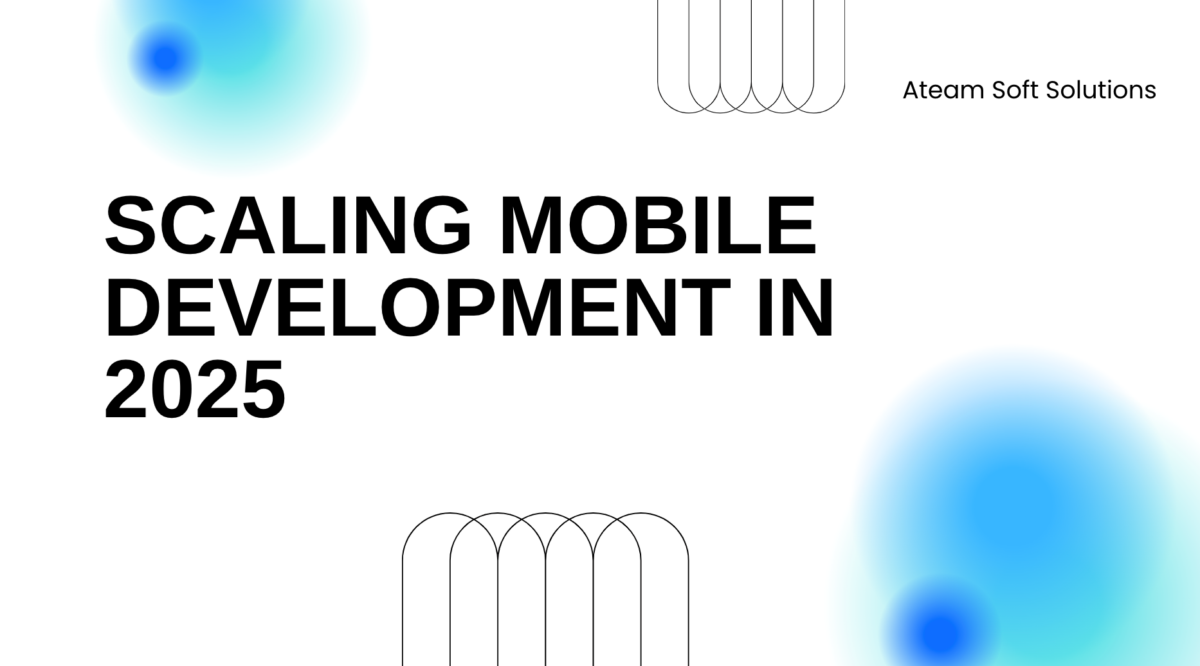This website uses cookies so that we can provide you with the best user experience possible. Cookie information is stored in your browser and performs functions such as recognising you when you return to our website and helping our team to understand which sections of the website you find most interesting and useful.
Exploring the Benefits of POC in Software Development

When it comes to software development, a proof of concept (POC) can be an invaluable tool. Not only does it help to mitigate risk and save costs, but it can also accelerate time to market. In this article, we will explore the concept of POC in software development and its benefits in more detail, as well as discuss best practices for developing an effective POC.
Understanding the Concept of POC in Software Development
A proof of concept (POC) is a small project that is used to demonstrate the feasibility of an idea or concept. In the context of software development, it can be used to validate technical feasibility, evaluate different design options, and explore potential solutions before investing significant time and resources in a full-scale implementation.
What is a Proof of Concept (POC)?
A POC is a prototype that is designed to test a specific hypothesis or idea. Rather than building a fully-functional software application, a POC typically focuses on demonstrating a core functionality or feature, using a scaled-down version of the software. This can save time and money, as it allows for the testing of key assumptions before investing in a full-scale implementation.
For example, if a company is considering Mobile App Development, they may create a POC to test the feasibility of the app’s core functionality, such as its user interface or data storage capabilities. By creating a POC, the development team can quickly identify any technical challenges or limitations and make adjustments before moving forward with a full-scale implementation.
The Importance of POC in the Software Development Process
POCs are particularly important in the software development process because they help to minimize risk and reduce costs. By validating technical feasibility and exploring potential solutions early on, developers can identify and address potential issues before investing significant time and resources in a full-scale implementation. This can help to ensure that the final product meets the needs of its intended users and is delivered on time and within budget.
Additionally, POCs can help to foster innovation by encouraging experimentation and exploration of new ideas. By testing out different design options and exploring potential solutions, developers can discover new and creative ways to solve problems and improve the user experience.
Key Components of a Successful POC
There are several key components that are necessary for a successful POC:
1. Clear Objectives and Scope – It is important to have a clear understanding of the problem you are trying to solve and the goals of the POC. This will help you to define the scope and ensure that the POC stays focused on the key objectives.
2. A Skilled and Experienced Team – The success of a POC often depends on the skills and experience of the development team. Make sure that you have the right people on your team, with the necessary expertise and knowledge to tackle the problem at hand.
3. The Right Tools – Choosing the right tools and technologies is critical to the success of a POC. Make sure that you are using the tools that are best suited to your needs and that your team is familiar with them.
4. Establishing Success Criteria and Metrics – It is important to establish clear success criteria and metrics at the outset of the POC. This will help you to measure the effectiveness of the POC and determine whether or not it has met its objectives.
5. Documenting and Presenting the Results – Finally, it is important to document and present the results of the POC in a clear and concise manner. This will help to communicate the findings to stakeholders and ensure that the team has a clear understanding of the next steps.
By following these key components, you can increase the likelihood of a successful POC and ultimately, a successful software development project.
Advantages of Implementing POC in Software Development Projects
Implementing a POC (Proof of Concept) in software development projects can provide numerous advantages, including:
Risk Mitigation and Cost Savings
Implementing a POC can help mitigate risks and reduce costs. By identifying potential issues early on in the development process, developers can avoid costly mistakes and ensure that the final product meets the needs of its intended users. This can save both time and money in the long run.
For example, let’s say a company wants to develop a new software application for their customers. By implementing a POC, the developers can test the feasibility of the idea and identify any potential technical challenges. This can help the company avoid investing significant time and resources in a full-scale implementation that may not be successful.
Validation of Technical Feasibility
POCs are particularly useful for validating technical feasibility. By testing a specific hypothesis or idea, developers can determine whether or not it is technically feasible before investing significant time and resources in a full-scale implementation.
For instance, a company may want to implement a new feature in their existing software application. By implementing a POC, the developers can test whether the feature is technically feasible and identify any potential challenges before investing significant resources in the development of the feature.
Improved Stakeholder Communication and Buy-In
Implementing a POC can also help improve stakeholder communication and buy-in. By presenting a working model of the software, stakeholders can better understand how the final product will function and provide feedback early on in the development process.
For example, let’s say a company is developing a new software application for their customers. By presenting a POC to the stakeholders, they can see how the application will work and provide feedback on its usability and functionality. This can help ensure that the final product meets the needs of the intended users.
Accelerated Time to Market
Finally, implementing a POC can accelerate time to market by reducing development time and ensuring that the final product meets the needs of its intended users.
For instance, a company may want to develop a new software application to meet a specific market need. By implementing a POC, the developers can test the feasibility of the idea and identify any potential challenges early on in the development process. This can help accelerate the time to market by ensuring that the final product meets the needs of the intended users.
In conclusion, implementing a POC in software development projects can provide numerous advantages, including risk mitigation, cost savings, validation of technical feasibility, improved stakeholder communication and buy-in, and accelerated time to market. By testing ideas and identifying potential challenges early on, developers can ensure the success of the final product and save time and resources in the long run.
POC vs. Prototype vs. Minimum Viable Product (MVP)
While POCs, prototypes, and minimum viable products (MVPs) are all similar in that they are used to test an idea or concept, there are some key differences between them.
Defining and Differentiating the Concepts
A POC is a small project that is used to test a specific hypothesis or idea. Its main focus is on technical feasibility and exploring potential solutions. POCs are often used to determine whether a particular technology or approach is viable before investing more resources into it. For example, a software development team might create a POC to test whether a new programming language or database system would be suitable for a larger project.
A prototype, on the other hand, is a more advanced version of a POC that often includes more features and functionality. It is used to test user experience and gather feedback. Prototypes can be physical or digital, and they are often used to simulate the look and feel of a product before it is fully developed. For example, a product design team might create a physical prototype of a new chair to test its ergonomics and comfort before producing a final version.
An MVP is a fully-functional version of a product that is used to test the market and gather user feedback. MVPs are typically developed with a limited set of features and functionality, with the goal of releasing a product quickly and inexpensively to gauge customer interest. For example, a software development team might create an MVP of a new mobile app with a limited set of features to test whether there is demand for the product before investing in additional development.
When to Use Each Approach in Software Development
The approach that is best suited for a software development project depends on a variety of factors, including the goals of the project, the stage of development, and the needs of the intended users.
A POC is best suited for early-stage development, when technical feasibility and potential solutions need to be explored. By creating a POC, developers can quickly test whether a particular technology or approach is viable before investing more resources into it. This can save time and money in the long run by avoiding costly mistakes later in the development process.
A prototype is best suited for mid-stage development, when user experience and feedback need to be tested. By creating a prototype, designers and developers can get a better sense of how users will interact with a product and identify potential issues before the product is fully developed. This can help ensure that the final product meets the needs of its intended users and is more likely to be successful in the market.
An MVP is best suited for later-stage development, when the product is ready to be tested and launched to the market. By creating an MVP, developers can quickly release a product to the market and gather feedback from users. This can help identify areas for improvement and guide future development efforts. Additionally, an MVP can help validate whether there is demand for a product before investing in additional development.
Best Practices for Developing an Effective POC
Developing an effective POC requires careful planning and execution. Here are some best practices to keep in mind:
Setting Clear Objectives and Scope
Before starting a POC, it is important to have a clear understanding of the problem you are trying to solve and the goals of the POC. This will help you to define the scope and ensure that the POC stays focused on the key objectives. It is important to involve all stakeholders in this process to ensure that everyone is on the same page.
For example, if you are developing a POC for a new software application, the objectives may include testing the functionality of the application, evaluating its usability, and identifying any potential issues that need to be addressed before the application is launched.
Selecting the Right Team and Tools
Choosing the right team and tools is essential for the success of a POC. Make sure that you have the right people on your team, with the necessary expertise and knowledge to tackle the problem at hand. It is important to involve people from different departments and with different skill sets to ensure that all aspects of the problem are addressed.
Additionally, choose the tools and technologies that are best suited to your needs and that your team is familiar with. This will help to ensure that the POC is executed efficiently and effectively.
Establishing Success Criteria and Metrics
Establishing clear success criteria and metrics at the outset of the POC is important for measuring its effectiveness. This will help you to determine whether or not the POC has met its objectives and identify areas for improvement.
For example, success criteria for a POC may include achieving a certain level of user engagement, reducing the time it takes to complete a task, or improving the accuracy of a process.
Documenting and Presenting the Results
Finally, documenting and presenting the results of the POC is essential for communicating the findings to stakeholders and ensuring that the team has a clear understanding of the next steps. This can include creating a report that outlines the objectives, scope, team, tools, success criteria, and metrics of the POC, as well as the results and any recommendations for improvement.
Presenting the results in a clear and concise manner is important for ensuring that stakeholders understand the findings and are able to make informed decisions about the next steps. This can include creating visual aids such as charts and graphs to help illustrate the data.
Following these best practices can help to ensure that your POC is executed efficiently and effectively, and that the results are communicated clearly to all stakeholders.
Conclusion
Overall, implementing a POC in software development projects can provide a number of advantages, including risk mitigation, cost savings, improved stakeholder communication and buy-in, and accelerated time to market. By following best practices and carefully planning and executing a POC, developers can validate technical feasibility and explore potential solutions before investing significant time and resources in a full-scale implementation.



